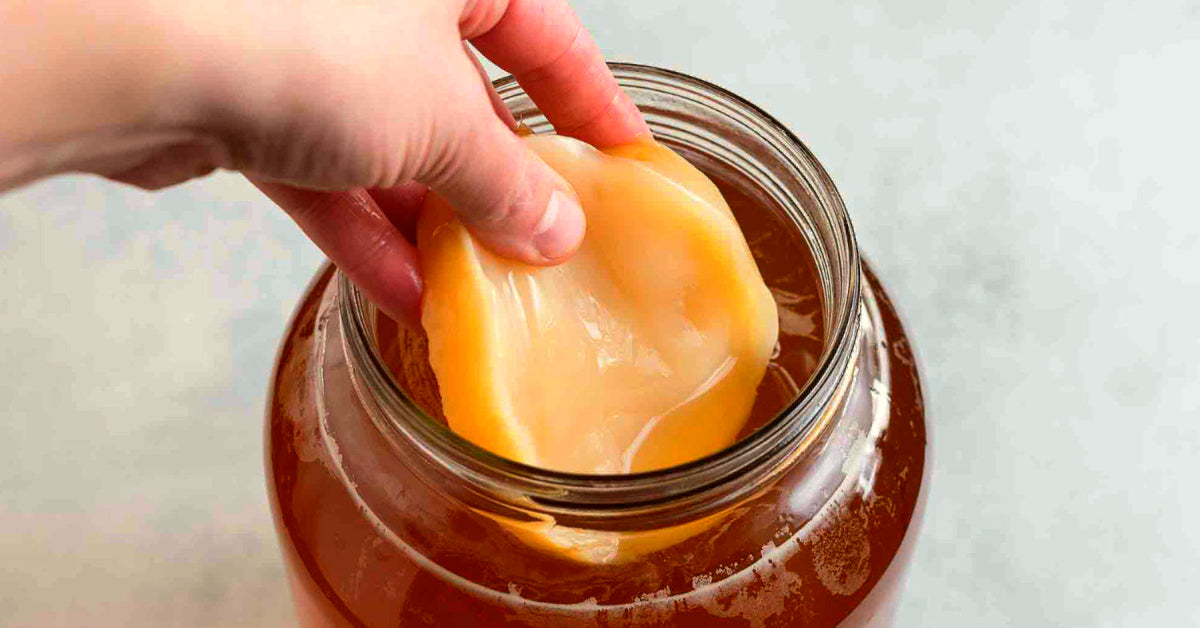
In today’s episode, Wendy shares 10 alternative ways to use kombucha that you probably haven’t thought of before.
People drink the fermented drink Kombucha for a variety of reasons, including the naturally occurring probiotics, acids, and good-for-you bacteria, all of which contribute to better gut health.
But did you know that you may utilize 'booch in a variety of ways other than drinking it? You may be pleasantly surprised to find out that Kombucha and its SCOBY are actually a multi-purpose concoction.
From being utilized as food and candy to beauty products, around the home, in the garden, and even for your pets, Wendy will provide you plenty of opportunities to use your extra kombucha and SCOBY along with tips and tricks to getting it right.
WHAT’S A SCOBY MADE OF?
SCOBY stands for symbiotic culture of bacteria and yeast, which means that the SCOBY is a big clump of both bacteria and yeast.
All bound together in layers that attach to form the larger SCOBY.
THE HEALTH BENEFITS OF EATING SCOBY
It turns out that there are numerous health benefits of consuming kombucha culture. To begin with, it is mostly composed of cellulose. This is the same biological structure that gives veggies their fiber.
Because humans are unable to digest cellulose, it flows right through our digestive tract, bringing with it undesirable waste. Consider it like scrubbing the walls of your intestines clean.
The western diet is notoriously lacking in the fiber department. What better way to supplement your fiber intake then with a few bites of scoby?
Fiber isn't the only advantage of eating scoby. The scoby culture contains the same bacteria and yeast that give kombucha its nutritious value. In other words, it's loaded with probiotics and antioxidants that are good for you.
WHAT DOES A SCOBY TASTE LIKE?
The closest food to compare it to is a gummy candy. The taste will be heavily influenced by the taste and type of tea you brewed.
The other strong flavor will be an overwhelming sweet taste. As kombucha is a sweet tea, there is a lot of added sugar and the SCOBY may absorb some when brewing.
HOW TO STORE A SCOBY BEFORE EATING
It’s possible to store your fresh or older SCOBYs inside a hotel. Be sure to keep it at room temperature and regularly change the starter fluid.
This will keep them fresh and active, ready for when you decide to eat them. Freshly Brewed: straight after the batch has finished brewing, when you remove a SCOBY from the vessel you’re able to eat it immediately.
WHAT TO LOOK FOR BEFORE EATING
- Just Been Brewed. It’s best to eat a fresh SCOBY if it’s just created a tasty batch. You can take the mother or baby SCOBY to eat, the fresher the SCOBY, the better.
- Smells Like Kombucha. Be sure to inspect your SCOBY to make sure it doesn’t smell bad, rotten, or gone off.
- Looks Healthy. Thoroughly inspect the SCOBY to see if it has any mold, or abnormal growth on it.
- Juice has been switched out. If you’re taking from a SCOBY Hotel, check to ensure the juice it’s sat in is fresh, gets changed regularly and not gone bad.
- Hasn’t been brewed too many times. Every SCOBY can ferment a finite number of batches, often between 6-12. If your SCOBY no longer can brew batches correctly, then we would not suggest consuming it.
CHOOSE YOUR SCOBY WISELY
The best tasting scoby comes from a freshly made culture that is about 1/4 of an inch thick. You may have to peel this youngster off from its mother before you use it. It should be nice and white in color. The thinner the better here.
This means the scoby’s cellulose is less developed compared to the more mature scoby. This is the best chance you have of actually being able to bite through the scoby.
SOAK YOUR SCOBY
The best way to prepare your scoby is by soaking it in a covered bowl of water for around 60 minutes. It’s also a good idea to chop the scoby into small pieces before you soak.
Soaking it this way also helps remove some of the acidic flavor, making it more palatable for most people. If you like your food to be on the tangy side you can always substitute milk for water.
So without further adieu, listen in for our 10 alternative ways to use Kombucha that you haven’t thought of.















